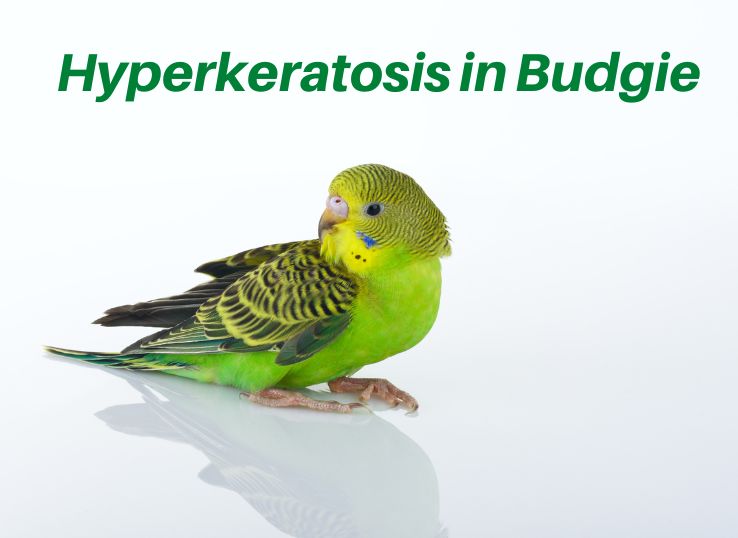How to treat hyperkeratosis in Budgies ( Find out!)
Last Updated on August 26, 2022 by Ali Shahid

You observe abnormal growth of the skin in your budgie. Are you upset? No worries! It is just a condition known as hyperkeratosis. You wonder! How to treat hyperkeratosis? This condition has no side effects just a little attention and a regular visit to the avian vet is the only task to deal with hyperkeratosis.
Hyperkeratosis is a condition in which you observe the abnormal thickening of the outer layer of skin on the cere or feet of your budgie. It is most often associated with female budgies rather than male budgies.
All the friends and family members start pointing out this abnormality. Everyone starts thinking you are not taking care of your little feather friend.
Getting these comments really hurt you. You start worrying about how to get rid of it. I know the feeling just stick with me and I will tell you all the tips on how to treat hyperkeratosis recommended by an expert avian vet.
Steps to treat hyperkeratosis of your budgie:
1. Make a friendly environment
First of all, make your budgie feel comfortable. Just sing with your feather friend. Remove all the hurdles that you think might hurt your budgie or hinder the capture.
Now use a small piece of towel to secure the bird at the corner of the cage. If she trusts you the process is going to be much easier.
2. Dab oil on the cere:
It is recommended to use coconut oil or olive oil to make the process smoother. Dab a little amount of oil 30 minutes prior to the removal of the dead skin. Once its cere looks slightly darker and shiny it means the oil has made it a little softer for the removal.

3. Remove the dead skin:
Restrain the head with one hand and support the torso and wings with the other hand. Make sure that you are not squeezing the chest.
Now, use your fingers to gently remove the dead skin from the cere. Relax! It is dead skin so it will not hurt your budgie. Keep in mind to remove small parts and ensure no bleeding. Most importantly make sure that your feather friend is inhaling and exhaling properly.
Wham! You have successfully removed the dead skin. The only concern with hyperkeratosis, mainly for birds affected by the cere, is not to leave it alone for too long as it can cause potential blockage of the nares.
People Also Ask
Why does my budgie cere overgrow?
It is a condition when your budgie ceres appear as a crust overgrowth. The most common reason for this condition is a mite called Knemidokoptes. In this, a band of tissue over the beak, around the nares, or around the legs may appear.
What are the causes of Hyperkeratosis?
One of the most common causes of hyperkeratosis is the lack of vitamin A in the diet. Diets that are mainly seed are Vitamin A deficient. Hyper keratin can be addressed if you start adding vegetables or pellets to the diet and frequent removal of the dead skin is recommended.
Is Ginger Good for my budgie?
People usually associate the treatment of hyperkeratosis with ginger. No doubt, ginger is linked with many nutritional benefits. It is encouraged to give your parrot some ginger from time to time.
You can, in fact, give your gingery treats to your parrot. But it is not directly related to the treatment of hyperkeratosis treatment in birds.
Final Verdict:
In a nutshell, you can treat it with little care and regular visit to the Avian Vet. Make sure to visit the Avian Vet and let him do the examination first. Don’t try to make changes by yourself.
In most cases, experts recommend adding vegies mesh consisting of grains, legumes, herbs, etc. Making a homemade seed mixture is appreciated rather than buying it from the market for your budgie having a crusty beak.
Thank you for reading the article. Hopefully, this article will provide you with the ultimate guide to dealing with hyperkeratosis in birds. If you want to learn more about the birds and their health issues let us know in the comment section below.
Your response will be appreciated.

